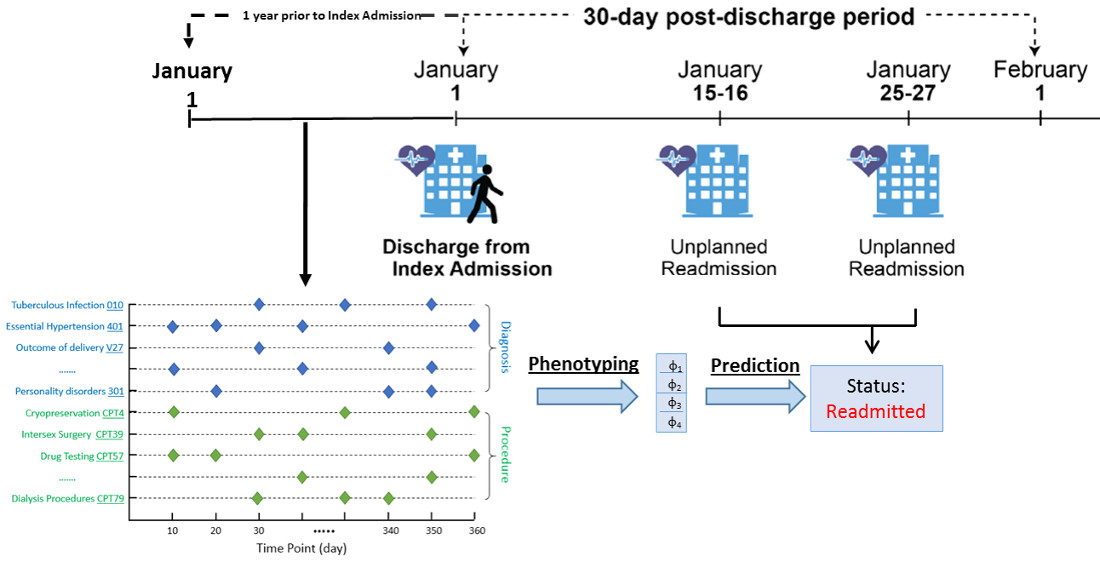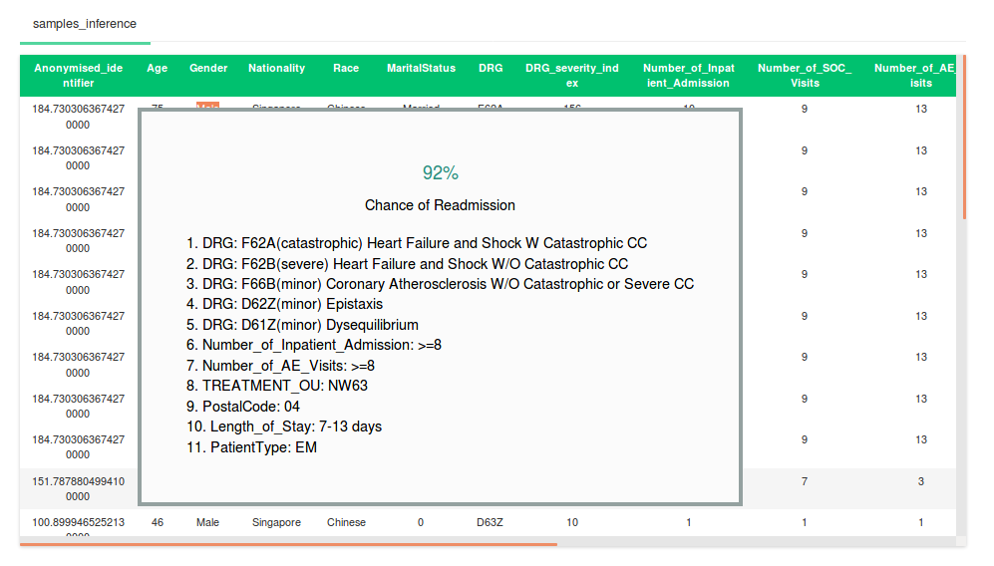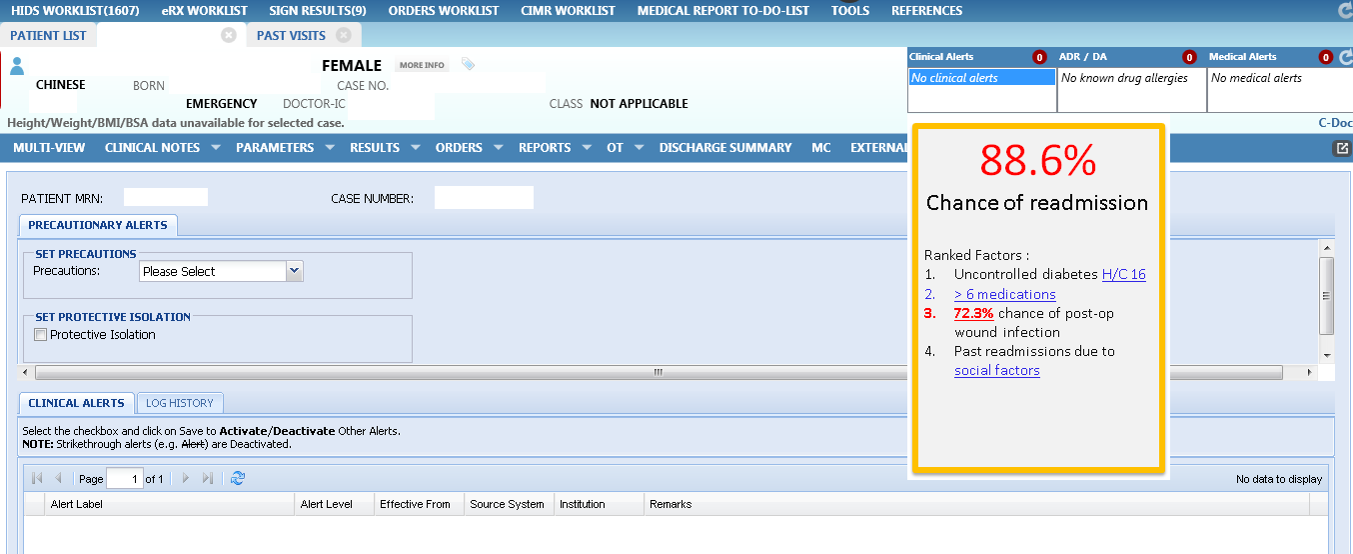Readmission Prediction

Figure 1: Readmission prediction
Figure 1 shows the scenario of readmission prediction. When a patient is discharged from hospital on January 1st (this corresponding admission is also called index admission), we will predict whether this patient will be readmitted into hospital again within 30 days. We use the patient's history data 1 year prior to the index admission as features and construct the patient history data in a patient matrix. After that, we feed this patient matrix into deep learning models and perform computational phenotyping to learn predictive representations for readmission prediction.

Figure 2: Readmission prediction result
Figure 2 shows a sample prediction result from our GEMINI platform. It not only gives the predicted chance of readmission but also provides the risk factors for readmission.

Figure 3: Readmission prediction result integrated with NUHS production system
Figure 3 shows how the readmission prediction results generated by GEMINI are integrated with NUHS production system: the chance of readmission and risk factors will be popped up as alerts to the doctors. For this application, GEMINI now goes through the data of all the inpatient patients in NUH every day and alerts doctors of high readmission risk patients through a user interface. With the predicted explainable risk factors, such as diseases and risk of readmission, provided by GEMINI for each patient, doctors are now able to categorize patients into different groups and provide personalized post-discharge care recommendation. One concrete example is cooperating with NUH Carehub: Doctors who are responsible for patient discharge are categorizing the discharged patients according to predicted disease risk factors and send them to NUH Carehub for corresponding post-discharge interventions and follow-ups.